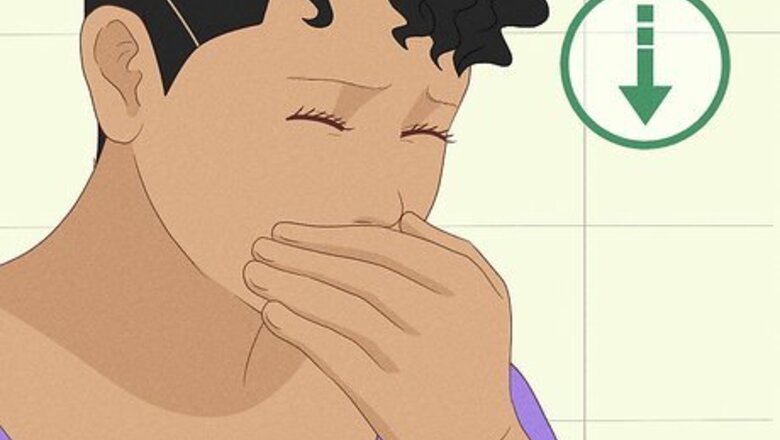
views
Can acupressure really relieve nausea?
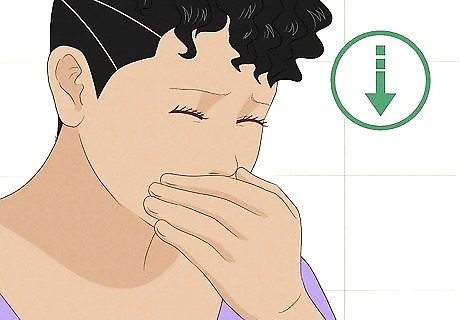
Yes, it may relieve mild to moderate nausea for some people. Studies show that acupressure can be effective for reducing nausea caused by motion sickness, pregnancy, cancer, chemotherapy, and surgical anesthesia. While it doesn't work for everyone, acupressure is cheap, non-invasive, and doesn’t cause harmful side effects. It’s certainly worth a try. Clinical trials are ongoing and more studies are needed, but the evidence is compelling.
Which pressure points help relieve nausea?

The P6 point on the inside of your wrist is the best one for nausea. The P6 point, also called Neiguan, is on the inner side of your arm about one-sixth of the way between your wrist and elbow. The exact point is in the center of your wrist between the 2 large tendons there. A few other pressure points may also be effective, but most studies focus specifically on the P6 point. If you’ve ever taken someone’s pulse with your fingers on their wrist, that’s about where the P6 pressure point is located.
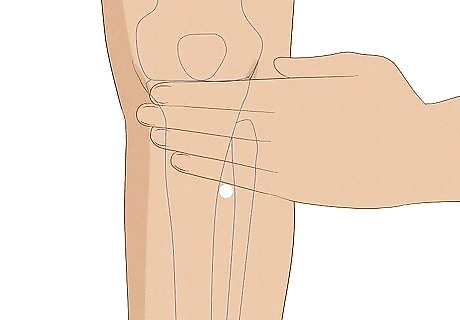
The ST36 point below each knee is also a good one for nausea. According to licensed acupuncturist Peter D'Aquino, "Point ST36, also known as Zu San Li, can improve issues concerning digestion, low energy, and immunity." It's located about 4 finger widths down from the bottom of your knee cap, near the outer boundary of your shin bone.
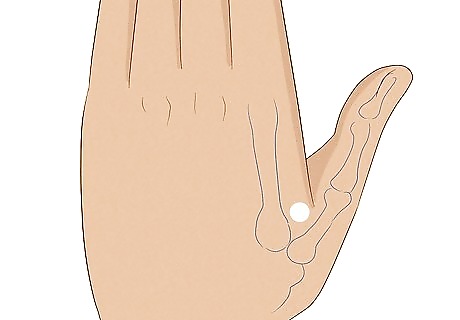
The LI-14 point can be helpful if your nausea is related to pain. The LI-14 point, also called Hegu, is located in the space between the base of your thumb and index finger on each hand. If you have nausea accompanied by a headache, licensed acupuncturist Peter D'Aquino suggests "massaging the highest point of the muscle between your thumb and index finger."
How do I apply pressure to the P6 point?

Position your hand with your palm facing you and fingers pointed up. Relax your arm and shoulder. You can start with your right or left hand – it really doesn’t matter. Both wrists have a P6 pressure point and you’ll switch to the other wrist after you apply pressure to the first one.

Place the thumbpad of your opposite hand on the P6 point. According to licensed acupuncturist Peter D'Aquino, "You can find this point by laying the first 3 fingers of your opposite hand across the inside of your wrist. This pressure point is located in the center of the wrist, between the 2 tendons." D'Aquino advises "applying either direct pressure or small circular pressure for a few minutes." You can slip your 3 fingers on the other side of your wrist to support your thumb.
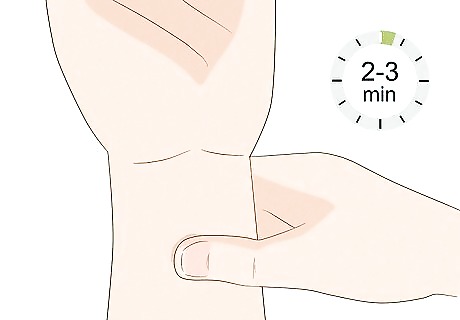
Press down with your thumb using firm pressure for 2-3 minutes. Press firmly, but don’t press so hard that it hurts! You can apply direct pressure or move your thumb in small circles. After applying pressure for 2-3 minutes, switch to the other wrist and do the same thing. You may feel immediate relief or it may take a few minutes. The experience is different for everyone. Studies show that applying constant pressure to the P6 point can be helpful. You can buy special wristbands at drug stores and online that do this for you.
How do I apply pressure to the ST36 point?

Find the bottom of your kneecap and measure 4 finger widths below it. Then, with your opposite hand, place a finger right below the lowest measuring finger (your pinky), on the outside of your shin bone. To check if you're in the right place, just move your foot up and down a few times. You should feel the muscle pop out each time you move your foot. It doesn't matter which leg you start with! You'll apply pressure to the opposite leg next.

Apply downward pressure on the point for 4-5 seconds. You can use your thumb or your index and middle fingers to apply pressure. Press down and hold without moving your thumb or gently rub up and down on the point (or try both!). After a seconds, switch to the other leg and do the same thing. Use firm pressure, but don't press on the spot so hard that it hurts. You can apply pressure as often as you'd like.
How do I apply pressure to the LI-14 point?

Find the space between the base of your thumb and index finger. Use your thumb to feel out the LI-14 point on the opposite hand. Position your thumb pad in the space between the base of your thumb and index finder. This pressure point works best if your nausea is accompanied by pain or headaches.
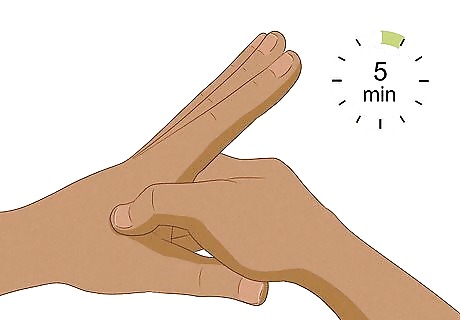
Press down on the point with firm pressure for 5 minutes. Don't press so hard that it hurts, but apply firm pressure to the area with your thumb pad. You can move your thumb in small circles as you apply pressure if you'd like. Repeat the same process on your opposite hand. You can apply pressure to this point as often as you'd like throughout the day.
What's the REN12 point and how do I apply pressure?

REN12 in your midsection may help with nausea caused by vomiting. If your nausea is associated with vomiting, applying pressure to this point might help. Unfortunately, there's not a lot of evidence that doing this will reduce the vomiting itself, but it may help reduce how much nausea you're feeling.
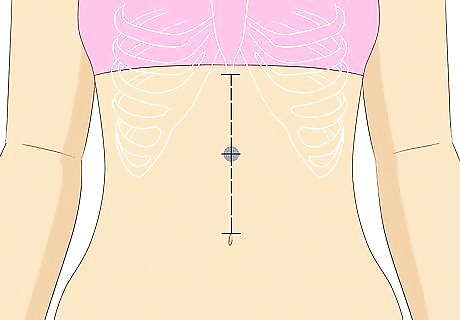
Find the halfway point between your belly button and ribs. Licensed acupuncturist Peter D'Aquino suggests "lying on your back on a mat or your bed. Then, find the halfway point between your belly button and the junction where your ribs come together. This is REN12."
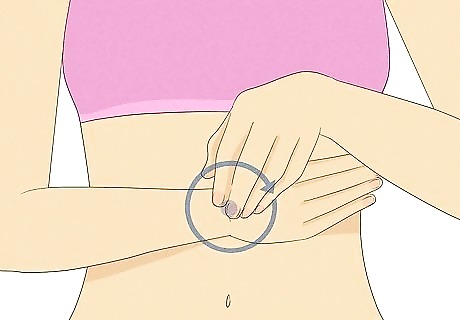
Apply pressure with the heel of your palm. Licensed acupuncturist advises "placing the heel of your palm on or just above this spot. Then, place your other hand on top of the first hand and lightly massage in a clockwise motion around your abdomen." Press down for about 5 minutes.
Is it safe to perform acupressure on yourself?

Yes, acupressure is safe and you won't experience side effects. Stimulating these pressure points for nausea relief is perfectly safe. Studies are still being done to measure just how effective this therapy is and which pressure points work best, but scientists confirm that it's totally safe to try, even if you’re pregnant or dealing with a long-term illness.
What exactly is acupressure and how does it work?

It’s a non-invasive therapy based on traditional Eastern medicine. In acupressure therapy, pressure is applied to certain points on the body to relieve symptoms like pain, nausea, fatigue, headaches, etc. The concept is similar to acupuncture therapy but there are no needles involved in acupressure. You apply pressure with your fingers or a special device.
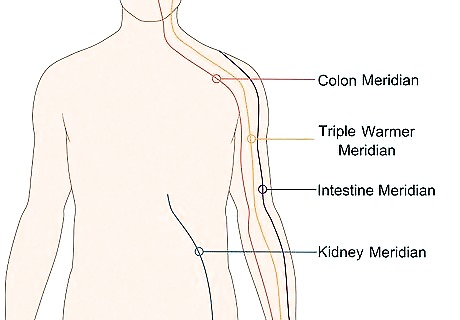
Studies are still being done to figure out exactly how it works. According to Eastern medicine, the human body has 12 meridians that create a network of energy pathways. Each meridian is related to an organ or area of the body. If a meridian gets blocked, we experience symptoms related to that area. It's thought that stimulating “pressure points” in the appropriate meridian(s) releases the blocked energy and eases symptoms. In Western medicine, it’s thought that stimulating pressure points may alter the “pain messages” that nerve endings send to the brain. These altered signals tell the brain to release neurotransmitters like serotonin, dopamine, and endorphins, which activate the central nervous system.














Comments
0 comment